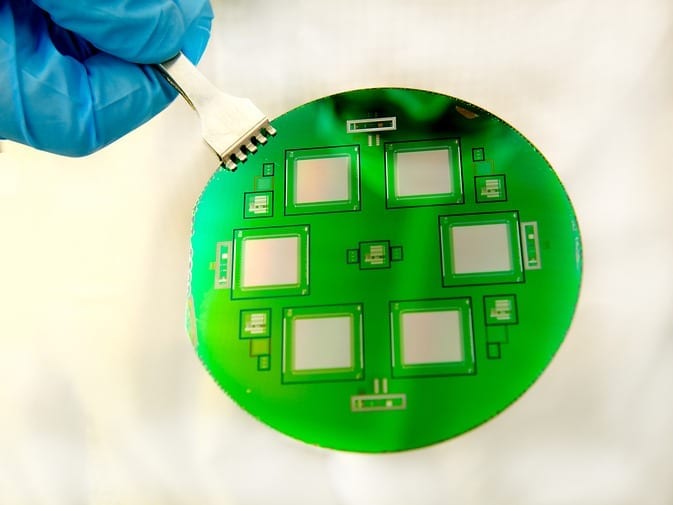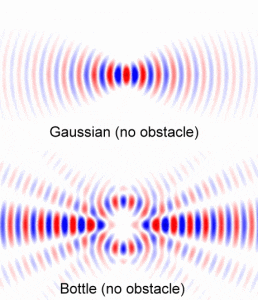
The presence of p45 (green staining) and p75 (red staining) indicates that motor neurons increase both p45 and p75 expression after sciatic nerve injury in an animal.
Scientists hope to borrow strategy from simpler animals to repair damaged spinal cord nerves in humans.
Frogs, dogs, whales, snails can all do it, but humans and primates can’t. Regrow nerves after an injury, that is—while many animals have this ability, humans don’t. But new research from the Salk Institute suggests that a small molecule may be able to convince damaged nerves to grow and effectively rewire circuits. Such a feat could eventually lead to therapies for the thousands of Americans with severe spinal cord injuries and paralysis.
“This research implies that we might be able to mimic neuronal repair processes that occur naturally in lower animals, which would be very exciting,” says the study’s senior author and Salk professor Kuo-Fen Lee. The results were published in PLOS Biology.
For a damaged nerve to regain function, its long, signal-transmitting extensions known as axons need to grow and establish new connections to other cells.
In a study published last summer in PLOS ONE, Lee and his colleagues found that the protein p45 promotes nerve regeneration by preventing the axon sheath (known as myelin) from inhibiting regrowth. However, humans, primates and some other more advanced vertebrates don’t have p45. Instead, the researchers discovered a different protein, p75, that binds to the axon’s myelin when nerve damage occurs in these animals. Instead of promoting nerve regeneration, p75 actually halts growth in damaged nerves.
“We don’t know why this nerve regeneration doesn’t occur in humans. We can speculate that the brain has so many neural connections that this regeneration is not absolutely necessary,” Lee says.
In the new study, the scientists looked at how two p75 proteins bind together and form a pair that latches onto the inhibitors released from damaged myelin.
By studying the configurations of the proteins in solutions using nuclear magnetic resonance (NMR) technology, the researchers found that the growth-promoting p45 could disrupt the p75 pairing.
“For reasons that are not understood, when p45 comes in, it breaks the pair apart,” says Lee, holder of the Helen McLoraine Chair in Molecular Neurobiology.
What’s more, the p45 protein was able to bind to the specific region in the p75 protein that is critical for the formation of the p75 pair, thus decreasing the amount of p75 pairs that bond to inhibitors release from myelin. With less p75 pairs available to bond to inhibitor signals, axons were able to regrow.
Read more . . .
The Latest on: Repairing an injured spinal cord
[google_news title=”” keyword=”Repairing an injured spinal cord” num_posts=”10″ blurb_length=”0″ show_thumb=”left”]
via Google News
The Latest on: Repairing an injured spinal cord
- Researchers create new, stronger way to repair lining of brain and spinal cordon April 26, 2024 at 12:51 pm
As neurosurgeons, we routinely open the dura to access the brain or spinal cord, but achieving a watertight seal of the dura after these procedures can sometimes be challenging,” said Kyle Wu, MD, a ...
- Brainless memory makes the spinal cord smarter than previously thoughton April 26, 2024 at 8:49 am
Researchers have discovered the neural circuitry in the spinal cord that allows brain-independent motor learning. The study found two critical groups of spinal cord neurons, one necessary for new ...
- Nerve Repair and Regeneration Market Beyond the Horizon Envisioning the Future of Market Size Analysison April 25, 2024 at 9:46 pm
Nerve Repair and Regeneration Market is valued approximately at USD 5.72 billion in 2019 and is anticipated to grow with a healthy growth rate of more than 9.15% over the forecast period 2020-2027.
- After spinal cord injury, neurons wreak havoc on metabolismon April 23, 2024 at 5:00 pm
Conditions such as diabetes, heart attack and vascular diseases commonly diagnosed in people with spinal cord injuries can be traced to abnormal post-injury neuronal activity that causes abdominal fat ...
- What To Know About Brooks Lee's Back Injury and Disc Herniations in Baseballon April 23, 2024 at 2:05 pm
According to Aaron Gleeman, the Minnesota Twins' top prospect is expected to miss at least another month after recently being diagnosed with a disc herniation in his balky back.
- Remarkable Findings – New Research Reveals That the Spinal Cord Can Learn and Memorizeon April 21, 2024 at 5:06 pm
New research reveals that spinal cord neurons possess the capability to learn and retain information independently of the brain. The spinal cord is often described as merely a conduit for transmitting ...
- Man Paralyzed In Surfing Accident Regains Ability to Walk After Stem Cell Treatmenton April 19, 2024 at 10:48 am
Chris Barr went surfing at Ocean Beach and broke his neck in eight places. He was paralyzed from the down. But after a stem cell trial, Barr is walking again.
- Broken SEPTA elevators cause frustration among wheelchair bound, more riderson April 18, 2024 at 2:59 pm
What would you do if you were in a wheelchair, but couldn't ride public transportation because of broken elevators? Amanda Parezo of Old City is sharing her story and wants SEPTA to pay more attention ...
- NervGen Pharma Reports 2023 Year-End Financial Results and Operational Updateson April 17, 2024 at 6:01 am
Anticipated completion of enrollment of the chronic cohort in the Phase 1b/2a clinical trial in Q2 2024CA$23 million bought deal financing completed in March 2024 provides expected cash runway through ...
- The spinal cord can act independently of the brain: Researchon April 15, 2024 at 1:00 pm
A study just found out that adaptive learning and recall in the limbs happen in the spinal cord, not the brain.
via Bing News









